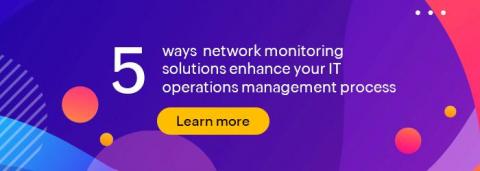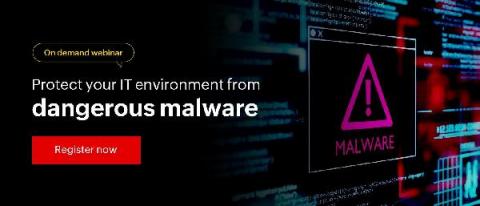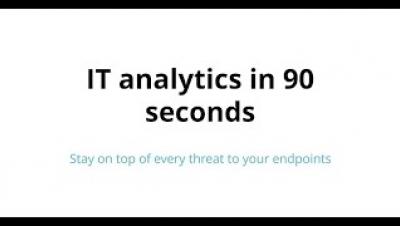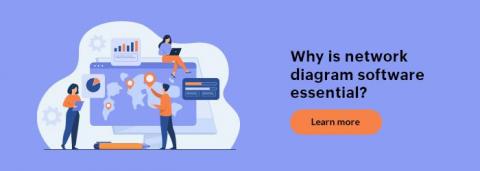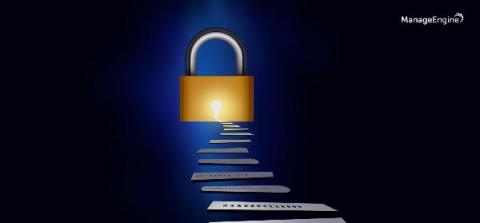Operations | Monitoring | ITSM | DevOps | Cloud
July 2021
Boosting performance with network monitoring solutions
Technological advances and emerging networking concepts are constantly shaping our IT infrastructure. Networks are no longer limited to traditional networking constraints such as its static nature, but are continually evolving to improve efficiency by spanning across wired, wireless, virtual, and hybrid IT environments. This IT evolution drives organizations to advance digitally and support computational requirements to meet their business objectives.
Malware alert: The RedXOR and Mamba attacks and how to defend against them
Picture this: It’s a normal day of working from home as usual since the COVID-19 outbreak. After that satisfying cup of coffee, you log in. But something is wrong. No matter how many times you click, your files don’t open. Your screen is frozen and refuses to budge. And then, you see one of the worst nightmares any IT admin can imagine: “Oops, your files have been encrypted. But don’t worry, we haven’t deleted them yet.
Launching Analytics Plus 5.0
Why implementing Zero Trust is more important than ever before
Five worthy reads is a regular column on five noteworthy items we’ve discovered while researching trending and timeless topics. This week, we explore why organizations should implement Zero Trust in 2021. In 2010, John Kindervag introduced the concept of “Zero Trust” which has become a touchstone for cyber resilience and persistent security. Zero Trust is not a security product, architecture, or technology.
IT analytics in 90 seconds: Stay on top of every threat to your endpoints
Webinar featuring IDC's Mark Leary: Make your IT operations future-proof with the Branch of One architecture
At the start of the pandemic, IT organizations had to undergo radical changes to support remote work. Given the urgency to shift to remote operations, IT admins opted for band-aid solutions to retain business continuity and stay connected to the core of their networks from remote locations. But now, many organizations are moving toward hybrid workforce options with employees choosing to work from both their home and office locations.
3 reasons to use network diagram software
Due to the evolution of IT systems, the recent shift to a hybrid workforce, changing client requirements, and other reasons, network monitoring has become much more complex. IT admins need to visualize the entire network infrastructure effortlessly. Gaining visibility into the network makes it easy to spot patterns, proactively troubleshoot faults, ensure the availability of critical devices 24/7, and more.
Say hello to a better, more flexible licensing model - OpManager Plus
Managing IT operations is becoming increasingly complex due to the evolution of IT systems, the recent shift to a hybrid workforce, changing client requirements, and many other reasons. This is why IT admins like you need a solution that allows you to deal with these complex ongoing problems effortlessly.
ManageEngine recognized in 2021 Gartner Magic Quadrant for Security Information and Event Management for the fifth time!
Today, we’re excited to announce that ManageEngine has been recognized in 2021 Gartner Magic Quadrant for security information and event management (SIEM) for the fifth consecutive time. We are thrilled to be awarded this recognition yet again for our contribution to the world of cybersecurity. “Most enterprises were not prepared for the widespread changes in work environments following the COVID-19 pandemic.
Five worthy reads: Password hygiene - The first step towards improved security
Five worthy reads is a regular column on five noteworthy items we’ve discovered while researching trending and timeless topics. This week let’s go back to security basics with password hygiene—the simplest, and yet often overlooked step in account security. Passwords have been the bane of many internet users since the inception of the world wide web.
Updates to ServiceDesk Plus Cloud for Microsoft Teams: Enhanced chatbot, ESM, and UI
2020 has seen a surge in the number of organizations embracing remote work to adapt to the new normal, leading to increased reliance on digital collaborative workspaces like Microsoft Teams. As organizations migrate critical business processes to such digital workspaces, IT service management teams need to leverage these platforms as channels for delivering IT and enterprise support.
OpManager: Network visualization tool that turns data into insights
Information is one of an organization’s most important assets. In the global wide area network (GWAN), operations of all sizes store, change, and exchange their business data. Similar to how the meaning of digital data sharing has evolved, aspects like data availability and security have taken on important new meanings as well. Today’s IT administrators need to ensure the network is stable.



